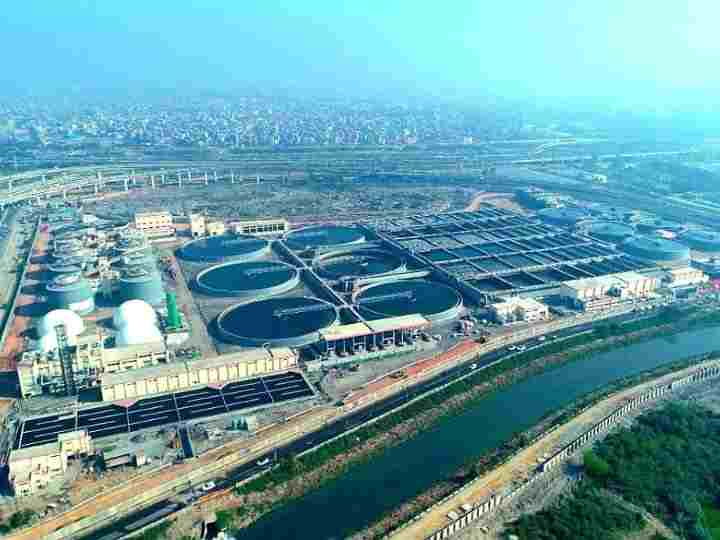

The Central Pollution Control Board report holds that India is generating nearly 72,368 million litres per day (MLD) that not just devastates the condition of the Indian rivers but also the regional ecological systems. Rapid urbanization and industrialization have compounded this problem over years. The Central Government is supporting the states through its Scheme of National River Conservation Plan (NRCP) to arrest sewerage and effluents in Indian cities and protect the water resources of this country. Under this, various pollution abatement works are being taken up like interception and diversion of sewerage, laying of new sewerage system, construction of sewage treatment plants (STPs) and better sanitation facilities.
According to a 2019 report by the CPCB, India had 816 STPs that were operational in the country. Today this number has risen as fresh capacity is being added in all cities and metros of the country. India is developing some of the largest STPs in the world. The top five STPs that are operational or under construction are:
Okhla Wastewater Treatment Plant: The 564 MLD capacity STP being built in Okhla, New Delhi, is going to be the largest STP or wastewater treatment Plant in Asia and fourth largest in the world in terms of capacity. This plant is a constellation of six STPs built with the most modern technology and facility to generate 5-MW of green power from the emanating sludge. Some parts of the STP are already operational while some will be operationalised shortly. The Delhi Jal Board has employed the UV technology that is used in RO plants, a first in any WWTP. About 40 lakh people will benefit from the project and the pollution out-pouring in Yamuna will be eliminated to a large extent in the Delhi stretch. Okhla STP is being developed under Yamuna Action Plan –III.
Koramangala and Challaghatta Valley Project: The Koramangala and Challaghatta (K&C) Valley Project consist of three sewage treatment plants having a combined capacity of 440 MLD in Bangalore. The STP project will filter the sewage and the treated wastewater will flow into the drain networks that connect 134 lakes in Kolar district. The objective of the project is recharging the groundwater aquifers in areas where the groundwater has gone down to around 100 feet. Apart from treating the wastewater, the excess of sludge produced in these STPs are further converted into and used as fertilizer. Recently, the Supreme Court had allowed the K&C Valley Project to take the tertiary water from Bangalore to Kolar. Some of the capacity is already under operations and some got delayed due Covid-led restrictions.
Coronation Pillar STP: North Delhi’s Coronation Pillar Sewage Treatment Plant is one of the biggest STPs in the country which was completed by the Delhi Jal Board in March, 2022, with an objective of cleaning the Yamuna River. It has a capacity to treat 318 MLD of wastewater everyday. The 50% of the capital cost is borne by National Mission for Clean Ganga and the remaining 50% by the Delhi Government. The STP is fully automatic and is currently undergoing a trial run. The large facility is equipped with state-of-the-art phosphate and nitrogen removal facilities and is designed to treat wastewater to new standards (biological oxygen demand and total soluble solids less than 10 mg per litre).
Kodungaiyur STP: This is the largest STP in Chennai metro with a capacity to treat about 270-MLD of sewage. The Chennai metropolitan area in Tamil Nadu has a population of more than 1 crore. Kodungaiyur STP is an amalgamation of three capacities: 110 MLD + 80 MLD + 80 MLD. The sewage generated from Manali and Chinnasekkadu are meant to be discharged into the existing Kodungaiyur STP. As per a document of Tamil Nadu state government, the STP is currently treating about 230 MLD of sewage on every day basis. Chennai Metropolitan Water Supply and Sewerage Board (Metrowater) operates the project. The Kodungaiyur plants collect waste water coming from North Chennai and Central Chennai. It cleans the water before releasing it into the sea. It forms an important part with other STPs of Chennai that are in Koyambedu, Nesapakkam and Perungudi to keep the water resources of the state capital, including sea, clean.
Kondli Wastewater Treatment Plant: This East Delhi project under Yamuna Action Plan-III too is being developed in four phases by Delhi Jal Board. Two projects in Kondli will have a capacity of 45 MLD each and one will have 114-MLD. The total capacity, hence, comes to 204-MLD. The project also hosts a novel 200 TPD (tonnes per day) capacity sludge treatment plant where pavement tiles are being made. This helps in two ways: first, the sludge being produced from the treatment of sewage doesn’t have to be transported to other places for disposal and second, the tile making strengthens the circular economy.
Urban local bodies have realised that utilization of sewage has many positive impacts on the economy and society as a whole. The use of treated sewage decreases the demand for freshwater from aquatic sources like rivers, ponds, lakes and groundwater aquifers. STPs are getting automatic through the latest technologies that allow quick treatment of wastewater in meagre spaces. We have also entered into an era of eco-friendly STP’s that reduce the risk to public health and the environment.
1. The mandate for blending Compressed Biogas (CBG) with natural gas has come into effect…
Andhra Pradesh is striving towards greening its energy sector with quite some speed. In a…
With an objective to bolster India’s green energy goals, a Tripartite Agreement has been signed…
The Union MNRE Minister Pralhad Joshi launched the Green Hydrogen Certification Scheme of India (GHCI)…
India’s energy conglomerate Bharat Petroleum Corporation Limited (BPCL) has commissioned a 5MW green hydrogen plant…
In a historical development, the European Space Agency (ESA) has successfully launched its pioneering ‘Biomass’…